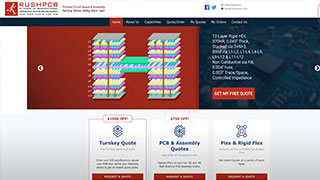For Chip on Board (COB) assembly, manufacturers need to use Aluminum wire bonding. The technique bonds Aluminum wires on to a PCB assembly whose surface has an ENIG plating.
ENIG plating is a thin Gold flash layer and functions as a protecting layer preventing the Nickel from oxidizing. The process of wire bonding anchors the Aluminum wire to the Nickel plating. As the ENIG plating is a low-cost process, it makes the wire bonding also a simple and inexpensive process. The only disadvantage is the large pad pitch for the bond required by the Aluminum wires.
When compared with the HASL surface finish, the ENIG process makes the PCB surface flatter and more even. This is a major advantage for assemblers and fabricators when bonding Aluminum wires on PCBs. Manufacturers prefer a traditional finish of Nickel and Gold for bonding Aluminum wires, and ENIG provides electroplated Nickel and electroplated Gold finish. The Gold plating on the PCB surface acts as an expansion of the bonding process for Gold thermosonic wires, for which, the Gold thickness must be greater than 50 mils. For Aluminum wire bonding, however, fabricators recommend a maximum Gold layer thickness of 25 mils, over a Nickel layer of 50 mils thickness.
Just like soldering, wire bonding also depends on process control, especially over the ENIG process. Manufacturers use two process for plating—electroplating or electrolytic plating and electroless plating. Electroplating is a much simpler process than electroless plating is, although electroplating requires bussing before the Gold plating can start. Various process preferences and different setups of individual fabricators may be the reason prices are different among them.
Purity of metals used by fabricators for the plating process also affects the quality of bonding. Pure Nickel is crucial for bonding of Aluminum wires. The Nickel in use must be the softest possible, and without voids and contaminants. Moreover, manufacturers must also exercise proper control over the chemicals they use in plating, and over the pH of their plating bath. For quality bonding of Aluminum wires, fabricators must maintain Gold thickness to a minimum of 3 mils, its purity must be at least 99.99% and there must be no trace of Thallium present.
Some manufacturers report high quality bonds of Aluminum wires when they use better chemicals, especially those from Atotech. For example, when using their pumice powder spray when cleaning the Copper surface on the PCB prior to plating, rather than the usual brushing.





